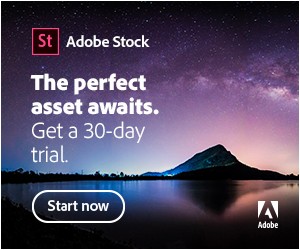Aside from offering an extensive range of design services to creatives, we carry a line of vinyl decals. We’ve sold at many events along the east coast since our product launch, so we know what it’s like to vend at markets and not sell. After years of trial and error (and we’re still learning at every market we attend!), we’ve found some significant things that have worked and noted the things that haven’t. So, if your product is strong, and you’re not sure why things aren’t selling at shows, these tips could help!
Some background: Personally, I’m not the sales type, I’m more of an introvert, and I like to create rather than promote. I’ve created and sold all kinds of products, from bound books to prints, and before this last product launch, my items never sold in person. It isn’t very encouraging! Creatives are usually more on the emotional side, and they have a personal connection to their work, so when you see that others aren’t interested in it even though the products are AWESOME, what can you do? For me, that’s where having an outgoing boothmate came in. They’re outside the creative process enough to not feel self-conscious about the work when it doesn’t sell, but close enough to know why our products are so great, AND explain that to potential customers! It’s also great to have a second person to bounce ideas off of when you brainstorm your market process.
Here are some things he and I have noted about vending at markets:
Before the event:
1. Attend before you vend! Do research beforehand
We’ve participated in many different types of markets over the past few years. Most were local, while others included travel and weekend trips away. The traveling markets are always harder to find because you may not be super familiar with their creative community. You also have to make sure that the markets are stable enough to cover all of your trip expenses (you could write off hotel stays and transportation when traveling for business!) We usually try to group multiple events at a time when we travel or mix it with some personal time. For example, neither of us had ever been to Salem, Massachusetts, so we found a market to vend at on a Sunday but went up a few days early to do some witchy sightseeing. The market we were vending at went for the whole weekend, so we stopped by on Saturday to scope out the crowd and see if there were any last-minute adjustments to our display that we had to make. Ultimately that market paid for the entire trip. While we didn’t come home with any extra money, we essentially got a weekend getaway paid in full for just 8 hours of our time!
As often as possible, try to attend a market before deciding to vend. This will help you gauge the audience and attendance. Talk to vendors while you’re there, and they are almost always willing to spill the beans about how great or not-so-great they are doing. We always introduce ourselves so they know they aren’t giving vital info to just anyone. The creative community, at least the ones we have encountered, is always willing to help each other.
If you can’t attend, check out the event’s social media. Do they have an event page? Just a profile? How does their website look? What are their core values? If they have a ton of page likes and engagement, it shows they put the work into marketing and keep up with promotion during the crucial time leading up to their event. Lastly, what type of market is it? Indie markets and punk rock flea markets are the holy grail for us. If they look trendy, we typically have a great turnout.
2. Analyze how your product matches the market
Make sure your stock and inventory are updated and customized based on the markets you research. Our inventory and display change from market to market depending on what we think the demographic will be. One of the big rules of thumb is that you should always have 3 general price points based on your product—cheap, middle, and high. The idea is this will help with your analytics after the event to see what most people are buying, and ideally, someone will always be purchasing from you. For us, this is the ideal price breakdown: Cheap ($1-4), Average ($5-14), High ($15-25). We sell stickers, so obviously, our prices will be different from someone who sells high-end jewelry ranging from $30-100.
3. Put together a small team and set goals
This could be asking your friends to help out, your family, your significant other, or bringing on hired help. Markets go much smoother when at least one other person is there with you. The goal of vending is to make that green, so having someone there to help set up, pitch, and hit all of the things I’ve listed below = less stress and more profit. Plus… bathroom breaks. The biggest asset for me at markets is having a partner there. One that is constantly pitching and attracting people while I’m checking out orders and talking more personally with customers. If you don’t have an outgoing partner, find a friend or family member willing to take on the complimenting role. Their only goal/job should be chatting up your lookers!
Setting goals is also super important. Figuring out what you want to make before the market will set the tone for how to pitch your sales. We found we work harder at markets when we have a higher goal we need to hit. But we always have a backup goal in case things don’t go as smoothly as planned. Set goals for other aspects of your business as well. Write down the number of emails you want to gather, business cards you want to hand out, connections you want to make, etc. Think about the specifics of your business.
At the event:
4. Talk to your customers
You should be talking to everyone who comes to your booth (yes, I know this is the hardest part, at least for me, this is where a helper comes in handy). Once people start filling in, it’s time to sell. Gauge your customers’ interest. If they are at your table for longer than a few seconds or if they start to ask questions, they want to know more. This is best handled when you have one person luring in customers while the other checks them out and provide the specifics of their order.


images from one of our FAV markets, the South End Open Market at Ink Block in Boston, MA.
5. Don’t be afraid to simplify your pitch
Most people are seeing your product for the first time. At a glance, they might not get what makes it so unique; now is your chance to tell them! But you only have a few minutes (if not seconds) to catch their attention, so simplify. I recommend picking 2-3 key things that make your products awesome. For us, we can’t assume that everyone knows what a vinyl decal is. They’re more advanced than stickers, but everyone knows what stickers are, so my partner’s pitch is usually along the lines of, “Hey! Do you guys like stickers? These decals are perfect for electronics, windows, and drinkware! We use commercial grade vinyl, which allows them to hold up in the outdoor elements for up to 6 years!” To switch it up, or if we know there’s more time to chat, they’ll add that they are illustrated, created by us personally, and we accept custom orders. When a customer really starts getting into it, we’ll elaborate a little more and talk about our inspirations.
6. Tell them where to find you online
Bring lots of business cards! There are a lot of times when people visit your booth right when they get there or when they are leaving. If they’re interested in your work but can’t purchase it then and there, let them know where they can find you. Give them a card with your info, or have them sign up for your email list. We also give business cards to everyone who purchases. Often times we will write our names and a coupon code on the back as it’s more personal than a pre-printed card, and they’re more likely to reach out again.
7. Share on social media throughout the day
Early in the day or during travel, We’ll always post a photo with an update of where we are, usually with a discount option if they mention said post. If the event has a specific hashtag, use that for everything. This allows you to reach out to your following and the events’ for people to find you once they arrive. I also try to post on the event pages or tag the event; they may even reshare! Free promotion 🙂 We do custom mugs on-site, so I’ll usually snap some photos of those and post them continuously until the end.
8. Talk to your neighbor vendors and the organizers
You’ll be hanging out with these people essentially all day. Make friends! We always meet some really unique and creative people when we vend at markets. Plus, if you’re in an area you’re not familiar with, it’s the perfect opportunity to continue your search for good markets. You could also make some great business connections this way!
The best markets we vended at had the organizers or their crew coming around and checking on vendors to see if they needed anything or asked for feedback. When that’s the case, ask them what they do to promote, tell them your concerns, and if it’s a good event, find out if they do more.
9. Don’t get discouraged
If an event isn’t living up to what you’d hoped, it’s easy to get down on yourself and give up. Just keep pushing through and have fun instead! Sometimes you could have done everything, but an event still wasn’t profitable enough. These are our fluke events. When that’s the case, we usually look closer at our display and product. Was our display easily visible enough? Should we request a different spot next time? Did our product not match the demographic? Sometimes, our second time doing an event works out better than the first. Other times, if it was an attendance issue, the crowd wasn’t there, and we saw other vendors struggling, we just wrote it off as a no-go event.
After the event:
10. Track your sales and analyze
Always look at your stats at the end of the event and compare them to other events you’ve done. Pay attention to what your customers buy, how much they spend, what times are the best for business, and what feedback they give. We use Square for all of our show sales as it allows us to easily find this info. We constantly are making improvements to our display, our product, our packaging, and our pitch. The more you sell at events, the more of a groove you get into, and you start to see what you did right and wrong easily. Of course, there are times it was the event, but luckily we haven’t run into that issue too much as we do our homework before committing.
Bonus:
11. Follow up
If you collect emails or keep a notepad for custom orders as we do, follow up! I usually will do this within the first few days after an event to keep us fresh in their minds. If we’ve had an exceptionally great time, I’ll usually message the organizers to thank them for their hard work and to keep us in mind for future events. It’s a lot of work to put together a market, and they are essentially in charge of a lot of people’s time, profit, and shopping experience, not just us vendors! Words of encouragement and feedback, as an event organizer myself, is always something I look for.
tl:dr The most significant tips I hope you all take away from this are to research the event, hire or trade for help, and talk to your customers.
Good luck and the best of success!










